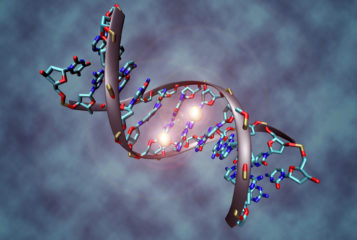Sequencing a patient's genome to find the genetic cause of their inherited disease has finally been proven to be a viable clinical approach in two recent independent studies. For some time gene sequencing has been heralded as ushering in a new era of medicine. However, until now, only around 10 people in the world had had their personal genomes sequenced in full, and all of these were healthy people. Now, in the ten years since the first full genome was sequenced (at a cost of $500 million), technology has improved to the point where entire genomes can be sequenced for $50,000 or less, and with a sufficient level of accuracy to be of practical use to medical researchers. It is this improvement in accuracy and cost that led to the two ground-breaking studies, and researchers hope it may offer a new lead in the search for the genetic roots of serious conditions such as heart disease, diabetes and Alzheimer's.
In the first study, the entire genomes of a family of four were sequenced by scientists from the Institute of Systems Biology in Seattle, US. This particular family was unusual because the parents were healthy, but the two children had two rare inherited genetic conditions: Miller's syndrome, which causes limb malformations and facial disfigurement, and also primary ciliary dyskinesia, a lung disorder where the hair-like structures that sweep mucus from the lungs fail to move properly, raising the risk of respiratory infection. Whilst the lung condition affects roughly one in 10,000 people globally, Miller's syndrome has only been officially recognised in a few families worldwide, and the odds of one person having both conditions is less than one in a billion.
Both conditions are caused by 'recessive' genes, which means that a defective copy must have been inherited from each of the parents in order for the diseases to manifest themselves. By sequencing the entire genomes from all four family members the Seattle researchers pinpointed four genes that may have been responsible, and were later able to confirm that two of the genes were the cause of the diseases. The methodological breakthrough, published in the journal Science, gives researchers a new weapon in their arsenal, allowing the defective genes behind many diseases to, in principle, be tracked down very quickly in the future.
The second study, which was published in the New England Journal of Medicine, also involved an inherited condition caused by recessive genes. Known as 'Charcot-Marie-Tooth', after the three people who first identified it, the condition causes a loss of sensitivity and muscle in the hands and feet. Dr James Lupski, vice chairman of molecular and human genetics at Baylor College of Medicine in Houston, Texas, US, had the unusual honour of being both the patient and the lead researcher in this study. Some 40 genes have been implicated in causing Charcot-Marie-Tooth, the first of which was discovered by Lupski and his team in 1991. However, only one gene is ever responsible in a particular family, and none of the 40 known genes were responsible for the condition in Lupski and his siblings. By sequencing the family's entire genomes, Lupski's team were able to identify a particular gene, known as SH3TC2, which was at fault in their case, and other research groups are already working on a drug that may affect that gene, said Lupski.
The key to the success of the new methodology behind these two studies is the comparison of genomes between family members. Whilst there may be some 3.5 million differences between the genomes of unrelated individuals, the DNA we inherit from each parent contains as few as 60 random mutations per generation (30 in the DNA from each parent). This is what allowed the researchers to home in on the one or two mutations, on single genes, that were responsible for the three conditions. However, more common diseases like cancer are thought to be caused by mutations in several genes, yet researchers are still optimistic that the method can be extended to such diseases in the future. David Galas, professor of genetics and senior author on the Seattle study, stated: 'It remains to be seen how far we can push it, but I really don't see any limitation to this. If we look at more and larger families we should be able to home in on the key genes linked to far more complex conditions, such as neurodegenerative diseases and autoimmune diseases.' This approach of utilising genetic information from more and larger families, combined with the widespread prediction that full genome sequencing will cost as little as $5,000 in two years, means that we may finally be on the verge of the personalised medical revolution we have long been promised.
Sources and References
-
'Personal' study shows gene maps can spot disease
-
Genomes of an entire family sequenced in world first
-
Gene Mutations Identified for Charcot-Marie-Tooth Syndrome
-
The future of medicine has arrived
-
Decoding Patient's Genome Found Gene For Inherited Neurological Disorder CMT
-
Genome work ushers in new genetic era
-
Disease Cause Is Pinpointed With Genome





Leave a Reply
You must be logged in to post a comment.